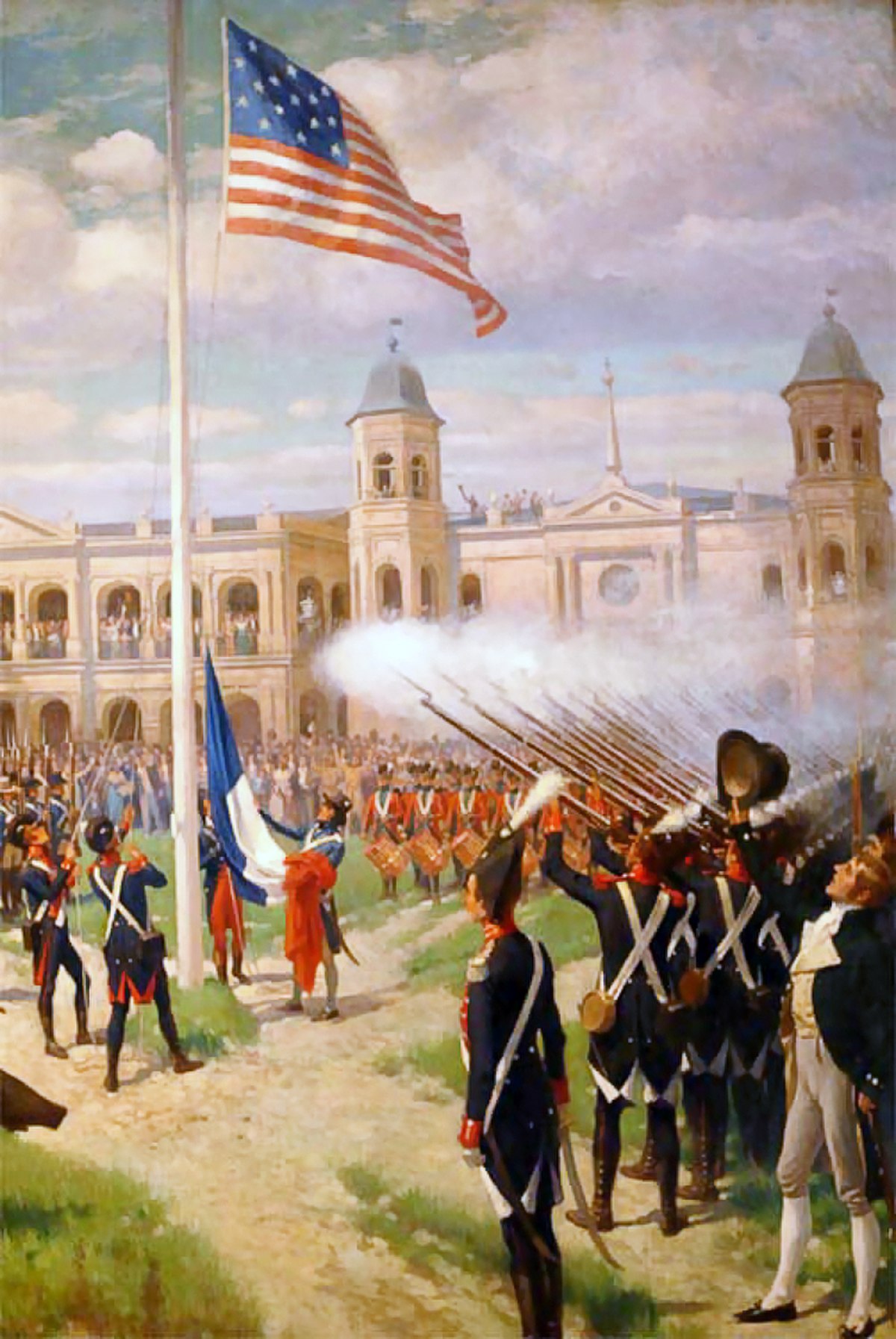
Louisiana Purchase
Louisiana, USAThe United States acquired the Louisiana territory from France in 1803. This vast land area included most of the land west of the Mississippi River within its drainage basin.[23] In exchange, for fifteen million dollars the U.S. Gained control, over 828,000 miles of land mostly inhabited by Native Americans. However, France only controlled a small fraction of this area, most of it inhabited by Native Americans; for the majority of the area, what the United States bought was the "preemptive" right to obtain "Indian" lands by treaty or by conquest, to the exclusion of other colonial powers.[24] The acquisition granted the U.S. the right to claim lands through treaties or conquest excluding colonial powers.
Before this France had controlled Louisiana from 1682[25] until it was transferred to Spain in 1762. In 1800 Napoleon Bonaparte reclaimed ownership of Louisiana as part of a plan to expand colonial presence in North America. Frances inability to suppress a rebellion, in Saint Domingue and the looming threat of conflict with the United Kingdom led Napoleon to contemplate selling Louisiana to the United States. President Thomas Jefferson had long desired to acquire Louisiana for control over the port of New Orleans on the Mississippi River. To achieve this goal Jefferson assigned James Monroe and Robert R. Livingston to negotiate for the purchase of New Orleans. Upon receiving an offer from French Treasury Minister François Barbé Marbois acting on behalf of Napoleon, the American envoys swiftly agreed to buy the Louisiana territory. Despite facing opposition from the Federalist Party, Jefferson and Secretary of State James Madison successfully convinced Congress to approve and finance the Louisiana Purchase.
The acquisition of Louisiana significantly expanded U.S. Control beyond the Mississippi River effectively doubling the countrys size on paper. At that time Louisiana had a population of 60,000 people who were mostly native residents with half being enslaved Africans.[26] Subsequent treaties like the 1819 Adams Onís Treaty with Spain settled its boundaries and adjustments were made through agreements like the Treaty of 1818 with Britain, for its borders.
